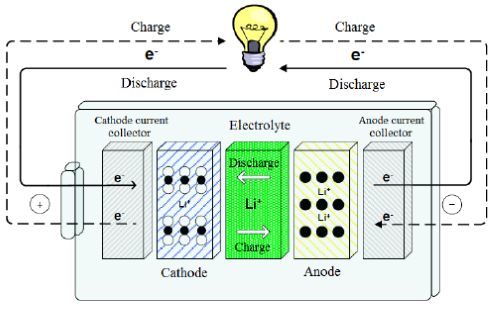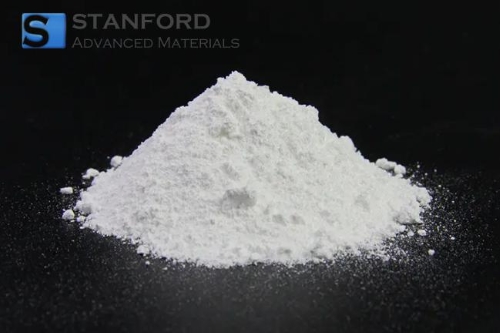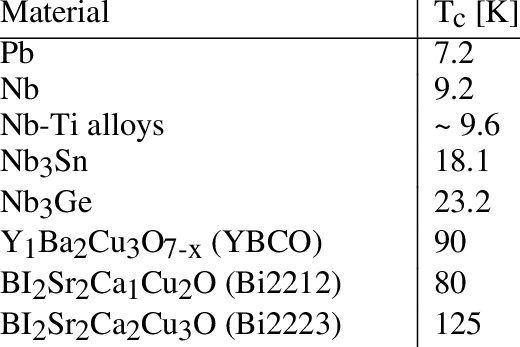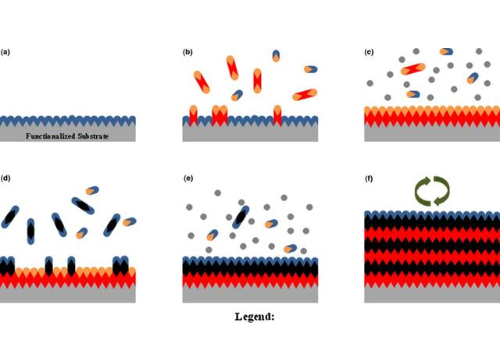LATP Solid Electrolyte: A Key Component for Solid-State Batteries
LATP, or Lithium Lanthanum Titanate Phosphate, has emerged as a key material in the development of advanced energy storage technologies, especially in solid-state batteries. With its distinct properties, LATP has become a central focus for researchers and manufacturers aiming to enhance battery performance, safety, and efficiency.
Let’s learn about the key features, applications, and essential concepts of LATP in this article.
 [1]
[1]
What is LATP?
Lithium Lanthanum Titanate Phosphate (LATP) is a crystalline compound that combines lithium (Li), lanthanum (La), titanium (Ti), and phosphate (PO₄) in a stable structure. The combination of these elements results in an excellent ionic conductor, making LATP an ideal candidate for use as a solid electrolyte in next-generation batteries.
Unlike conventional liquid electrolytes, which can be flammable and pose safety risks, LATP offers a safer, more stable alternative with superior performance characteristics.

Key Properties and Benefits
LATP solid electrolyte possesses several desirable properties that make it an attractive material for use in energy storage devices:
- High Ionic Conductivity: LATP has demonstrated high ionic conductivity, a critical factor in the efficiency of solid-state batteries. Its ionic conductivity often exceeds 10⁻⁴ S/cm at room temperature, which is comparable to or even better than many other solid electrolytes, such as lithium phosphorus oxynitride (LiPON).
- Wide Electrochemical Stability Window: One of the significant advantages of LATP is its wide electrochemical stability window, which enhances the stability of the battery and reduces the risk of undesirable reactions between the electrolyte and electrodes.
- Good Mechanical Strength: LATP is known for its robust mechanical properties, which help ensure the structural integrity of the battery, particularly during charge and discharge cycles.
- Safety: LATP’s solid-state nature eliminates the risk of leakage and combustion, which are common hazards associated with liquid electrolytes. This makes LATP-based batteries much safer, particularly in high-energy applications.
- Thermal Stability: LATP remains stable at high temperatures, which is vital for high-performance batteries that may operate under varying thermal conditions.
Applications of LATP Solid Electrolyte
LATP solid electrolytes are most commonly found in solid-state batteries (SSBs), which are viewed as the next frontier in energy storage technologies. These batteries have the potential to outperform conventional lithium-ion batteries in several key areas, including energy density, charging speed, and safety.
- Electric Vehicles (EVs): Solid-state batteries with LATP electrolytes can enable longer driving ranges and faster charging times compared to current lithium-ion batteries. Additionally, the enhanced safety of LATP-based solid-state batteries reduces the risk of thermal runaway, which can be critical in EV applications.
- Portable Electronics: LATP solid-state batteries are being explored for use in smartphones, laptops, and wearable devices. Their higher energy density allows for smaller and more efficient power sources, leading to lighter and more compact devices.
- Grid Storage: LATP-based solid-state batteries have the potential to improve energy storage for renewable energy sources, such as solar and wind. These batteries can offer higher capacity and longer lifespans, which is crucial for large-scale energy storage solutions.
- Medical Devices: LATP’s non-flammable and stable nature makes it ideal for powering medical devices that require reliable, long-lasting batteries. Its safety and high energy density are particularly beneficial in implantable devices and sensors.
LATP vs Alternative Solid Electrolytes
LATP is a promising solid electrolyte material for all-solid-state lithium-ion batteries. However, there are alternative solid electrolytes that also show potential for use in these batteries, such as:
- Sulfide-based Electrolytes: Materials like Li2S-P2S5 (lithium sulfide-phosphorus pentasulfide) offer high ionic conductivity, often surpassing LATP. However, they are sensitive to moisture, which can limit their practical application.
- Phosphate-based Electrolytes: Other phosphate materials, such as Li7La3Zr2O12 (LLZO), have high ionic conductivity and are more stable in air compared to sulfides, making them a viable alternative to LATP. However, LLZO suffers from issues related to dendrite formation and mechanical instability.
- Oxide-based Electrolytes: Solid oxides, such as the garnet-type Li7La3Zr2O12 (LLZO) and perovskite-type materials, are robust and offer good electrochemical stability. Their ionic conductivity is typically lower than LATP but still acceptable for solid-state batteries.
Each material type has its trade-offs regarding conductivity, stability, and compatibility with lithium anodes.
Conclusion
LATP solid electrolyte is a game-changing material in the development of solid-state batteries. Its high ionic conductivity, safety, and electrochemical stability make it an excellent choice for powering next-generation devices, from electric vehicles to portable electronics.
While there are still challenges to overcome, ongoing research and advancements in materials science are likely to unlock even greater potential for LATP in the energy storage sector. As solid-state batteries continue to evolve, LATP is expected to play a key role in the future of sustainable energy storage technologies.
Stanford Advanced Materials (SAM) provides a comprehensive selection of high-quality ceramic materials at competitive prices, positioning us as your trusted partner in the battery industry. Our LATP Powder is a cutting-edge nano-solid electrolyte material, essential for the development of all-solid-state lithium-ion batteries.
A diverse range of Li-ion Batteries and Electronic Chemicals, including battery electrolyte solutions, battery cathode and anode materials, and electronics assembly chemicals, are also available. These products are engineered to support advancements in energy storage, electric vehicles, and electronic manufacturing. For more information or to discuss your specific needs, please check our homepage.
Reference:
[1] Sousa, Rui & Sousa, J. A. & Ribeiro, J. & Goncalves, L.M. & Correia, J.H.. (2013). All-solid-state batteries: An overview for bio applications. 3rd Portuguese Bioengineering Meeting, ENBENG 2013 - Book of Proceedings. 10.1109/ENBENG.2013.6518400.



